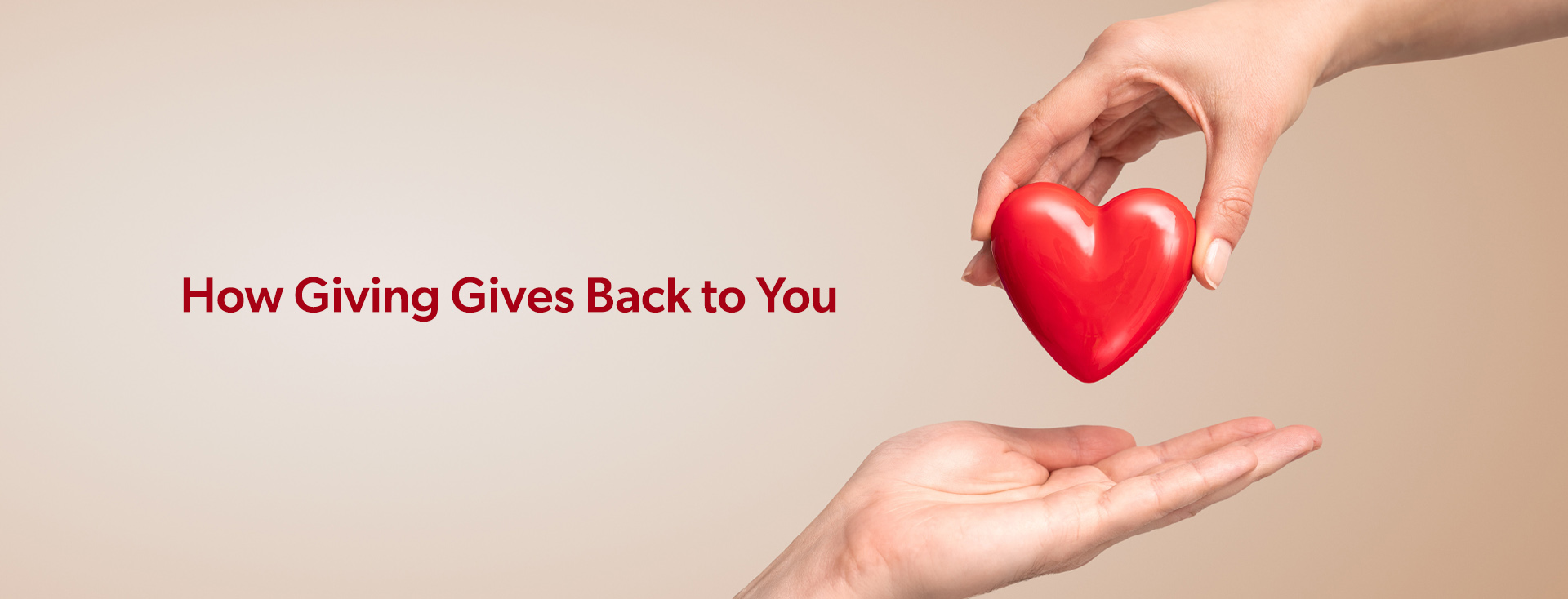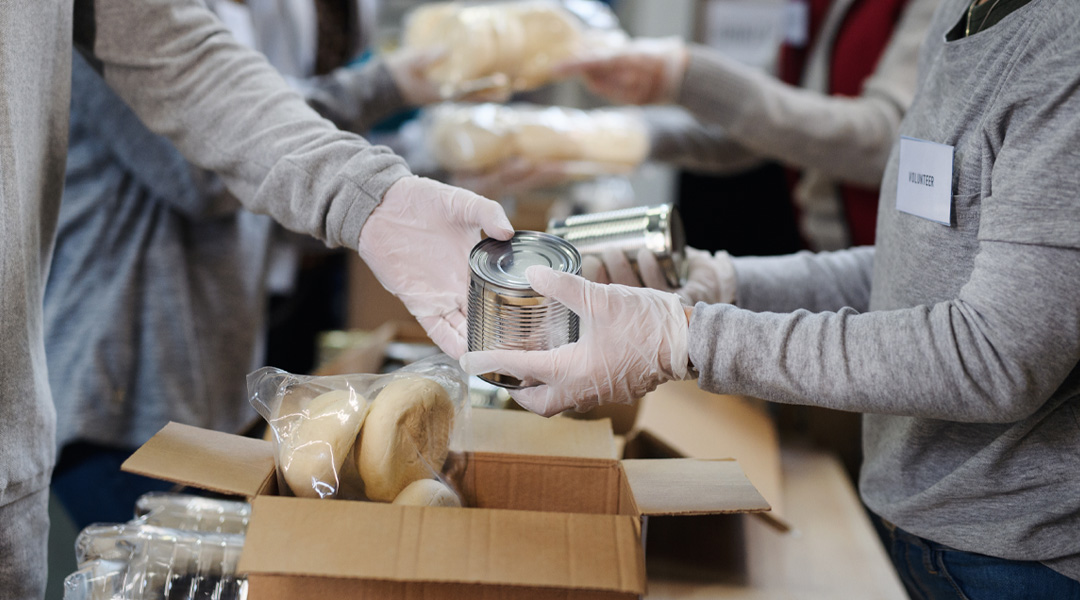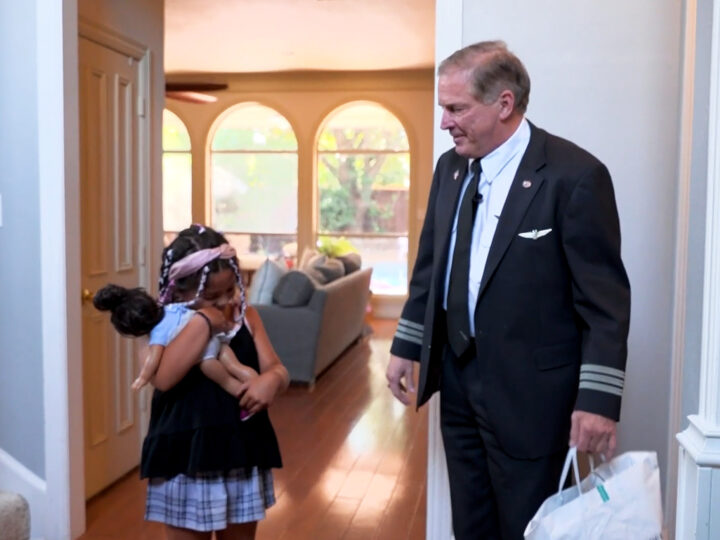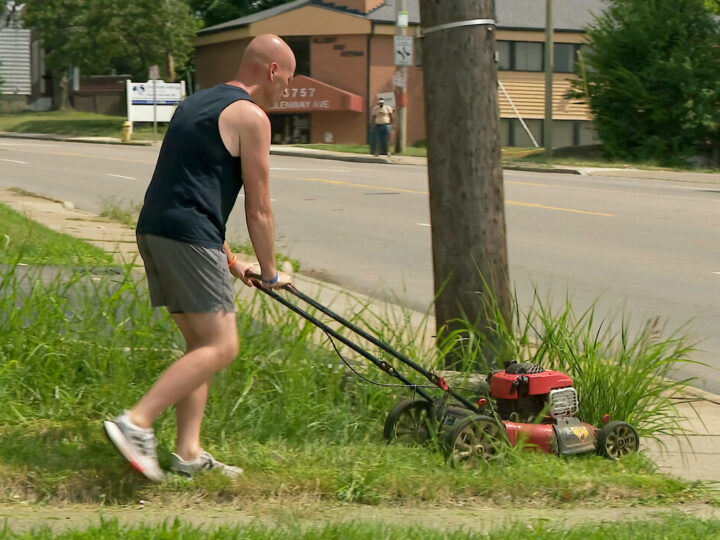
The health benefits of helping others
One of the best ways people show their love is when they give to others. It doesn’t matter whether the gesture is big or small, every act of generosity leaves the giver feeling good. Why is that? Studies show generosity makes us happier because it stimulates parts of the brain that generate feel-good chemicals like dopamine.1 That’s not all. Research has shown that the emotional and physiological effects of these changes not only protect us from disease, but help us live longer, too.
Longer Life
Because stress suppresses the immune system, it has long been a risk factor in nearly all chronic diseases including cancer, as well as mortality.2 One of the best ways to reduce stress is through the joy we feel by giving to others. A study with over 800 people in Detroit found that not only did giving time and assistance to others reduce stress, but that stress did not predict mortality for those who helped others regularly in the previous year. This wasn’t the case for those that did not lend a helping hand, and the results held even after adjusting for age, health, and other lifestyle factors.3
A study of 2,000 elderly people and retirees found that volunteerism reduced mortality rates more than exercising four times a week. Those who volunteered for two or more organizations experienced a 63% lower rate of all-cause mortality than those who didn’t volunteer.4
Research from the University of Michigan followed 2,700 men for 10 years and found that those who did regular volunteer work had a death rate 2.5 times lower than men who did none.5 The greater longevity seems to be not only a result of the reduced stress and good feelings that arise from helping others, but also because of the renewed sense of purpose and the need to be needed inherent to human nature.

Better Health
While giving to others increases our longevity through reduced stress and good feelings, it also gives us a better quality of life through better health. Research from Carnegie Mellon University found that older adults performing at least 200 hours of volunteer service each year experienced a 40% decrease in hypertension (high blood pressure).6
Younger people also benefit from giving. A study of high school students found that those who volunteered in an afterschool program had lower levels of inflammation and LDL or “bad” cholesterol, and lower body mass indexes (BMI).7 In fact, youth who volunteer regularly enjoy better overall health, perform better in school, and are less likely to engage in delinquent behavior.8 Regardless of age, volunteerism has been found to effectively reduce depression and generate higher levels of life satisfaction.9, 10
Need Near You
Researchers are now finding that lending a helping hand benefits us so greatly over other forms of giving such as writing a check to a charitable organization because we can immediately see the effects of our generosity on the receiver. This effect is amplified even more if we’re helping someone we know.
Researchers of a recent study presented participants with a game of identifying emotions from a series of facial photographs. One group was told they could win a monetary award for someone close to them who was in need. A second group was told they were playing for a monetary award to be made to a charity. The researchers wanted to examine the physiological effects of what they called targeted giving (to someone familiar or visible to the giver) versus untargeted giving (to an unknown or invisible entity). Participants’ brain activity was examined via functional MRI scans (fMRI) during the games.
Results showed that while both groups experienced the feel-good effects of dopamine and the usual brain changes when engaging in generosity, the group that was playing to help someone they knew experienced a significant drop in activity of the amygdala that was not seen in the group playing for a charitable organization. The amygdala is the part of the brain that sends out the stress signal that triggers the body to enter fight-or-flight mode. This greater level of stress reduction that happens when we help people we know or who are in our immediate environment almost certainly leads to even greater health benefits. The researchers stated, “Giving targeted support to an identifiable individual in need is uniquely associated with reduced amygdala activity thereby contributing to understanding of how and when giving support may lead to health.”11
So, find the person in need that’s closest to you. That may be a family member, neighbor or someone at a local nursing home. When we help those in our immediate environment, not only are we benefiting our community, we’re gaining an even greater health benefit for ourselves by seeing the instant results of our actions, and that’s the real gift of giving.
SOURCES
1Park, S. Q., & Kahnt, T. (2017). A neural link between generosity and happiness. Nature Communications, 8(1). doi:10.1038/ncomms15964
2Cohen, S., & Janicki-Deverts, D. (2007). Psychological Stress and Disease. Journal of the American Medical Association, 298(14), 1685-1687. doi:10.1001/jama.298.14.1685
3Poulin, M. J., & Brown, S. L. (2013). Giving to others and the association between stress and mortality. American Journal of Public Health, 103(9), 1649-1655. doi:10.2105/ajph.2012.300876
4Oman, D., & Thoresen, C. E. (1999). Volunteerism and mortality among the community-dwelling elderly. Journal of Health Psychology, 4(3), 301-316. doi:10.1177/135910539900400301
5Luoh, M., & Herzog, A. R. (2002). Individual consequences of volunteer and paid work in old age: Health and mortality. Journal of Health and Social Behavior, 43(4), 490. doi:10.2307/3090239
6Sneed, R. S., & Cohen, S. (2013). A prospective study of volunteerism and hypertension risk in older adults. Psychology and Aging, 28(2), 578-586. doi:10.1037/a0032718
7Schreier, H. M., & Schonert-Reichl, K. A. (2013). Effect of volunteering on risk factors for cardiovascular disease in adolescents. JAMA Pediatrics, 167(4), 327. doi:10.1001/jamapediatrics.2013.1100
8Collett, J., Morrissey, C., Science of Generosity, Department of Sociology, University of Notre Dame, (2007), https://generosityresearch.nd.edu/assets/17634/social_psychology_of_generosity_final.pdf
9Musick, M. A., & Wilson, J. (2003). Volunteering and depression: The role of psychological and social resources in different age groups. Social Science & Medicine, 56(2), 259-269. doi:10.1016/s0277-9536(02)00025-4
10UnitedHealthcare / Volunteer Match, Do Good Live Well Study, (2010), https://cdn.volunteermatch.org/www/about/UnitedHealthcare_VolunteerMatch_Do_Good_Live_Well_Study.pdf.
11Inagaki, T. K., & Ross, L. P. (2018). Neural correlates of giving social support. Psychosomatic Medicine, 80(8), 724-732. doi:10.1097/psy.0000000000000623
JOIN THE MOVEMENT
Subscribe to our newsletter and receive inspirational stories delivered to your inbox that spread love, updates on our movement, and notifications on upcoming deals & events.




